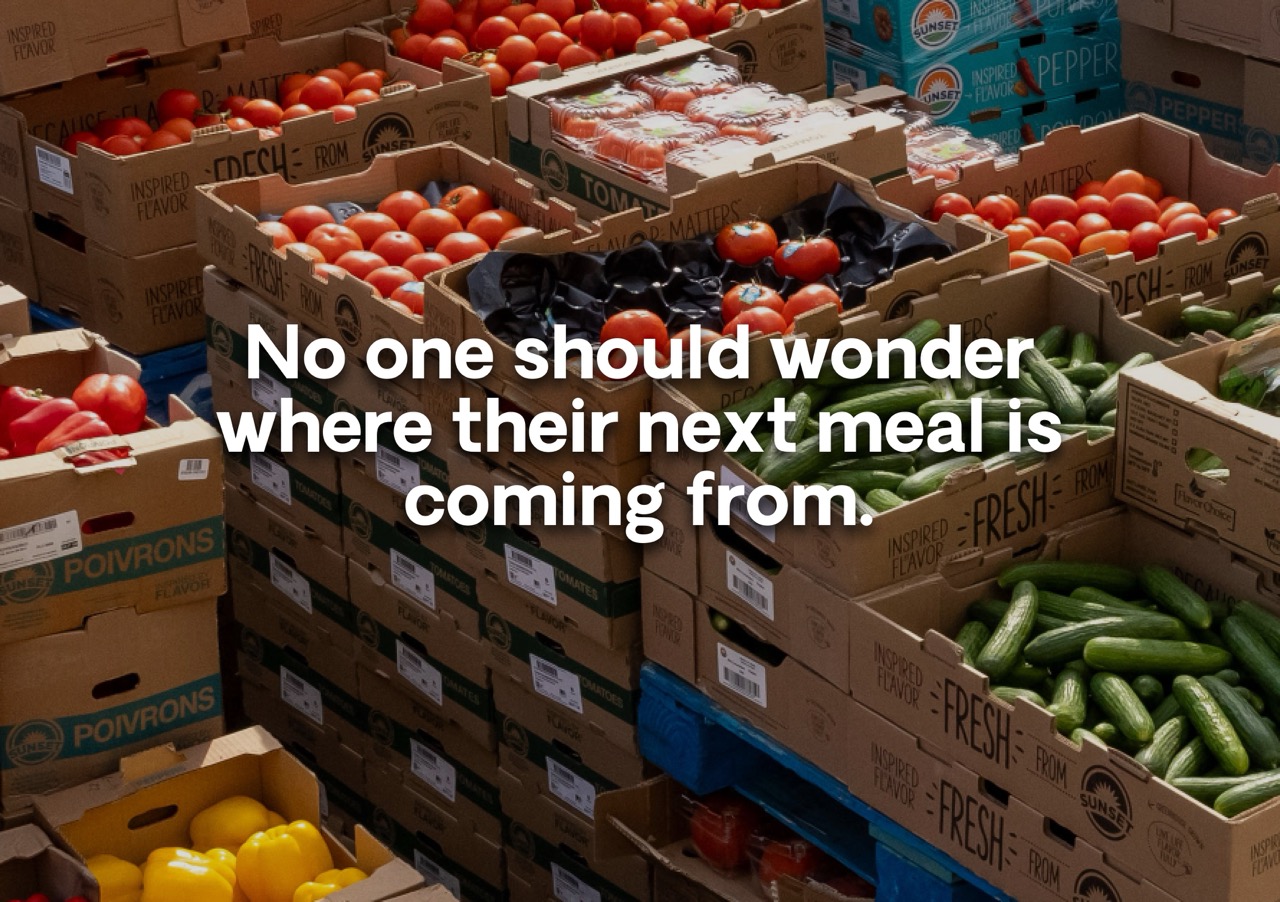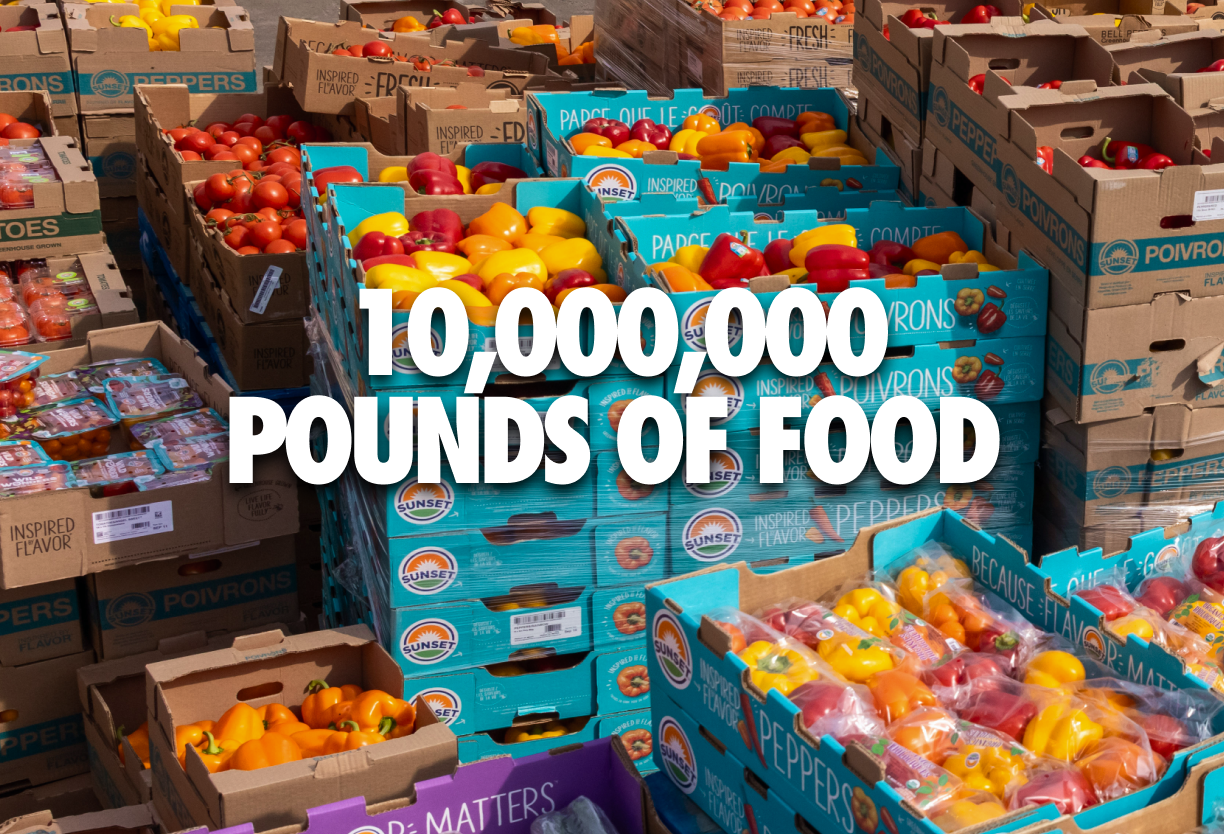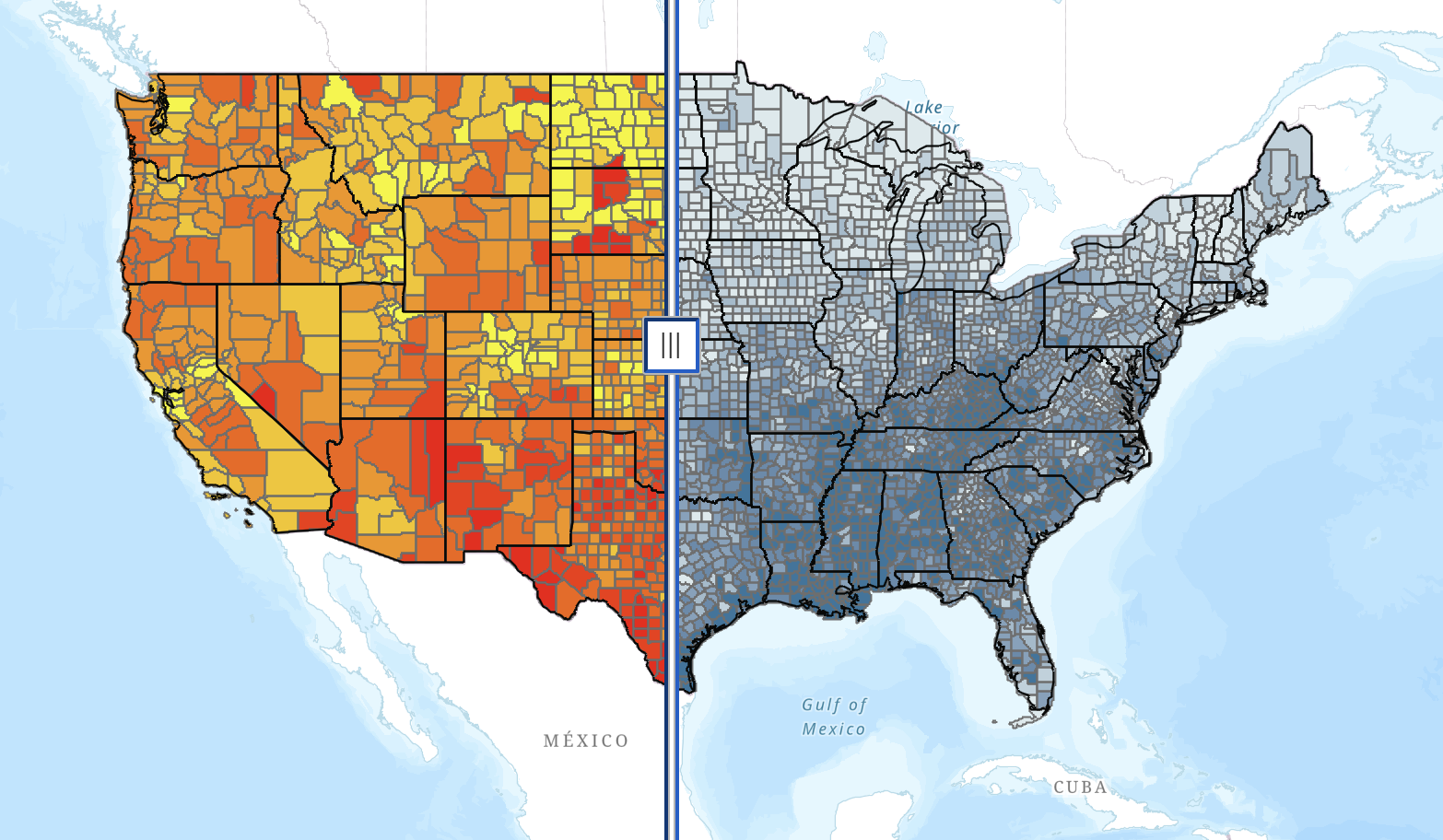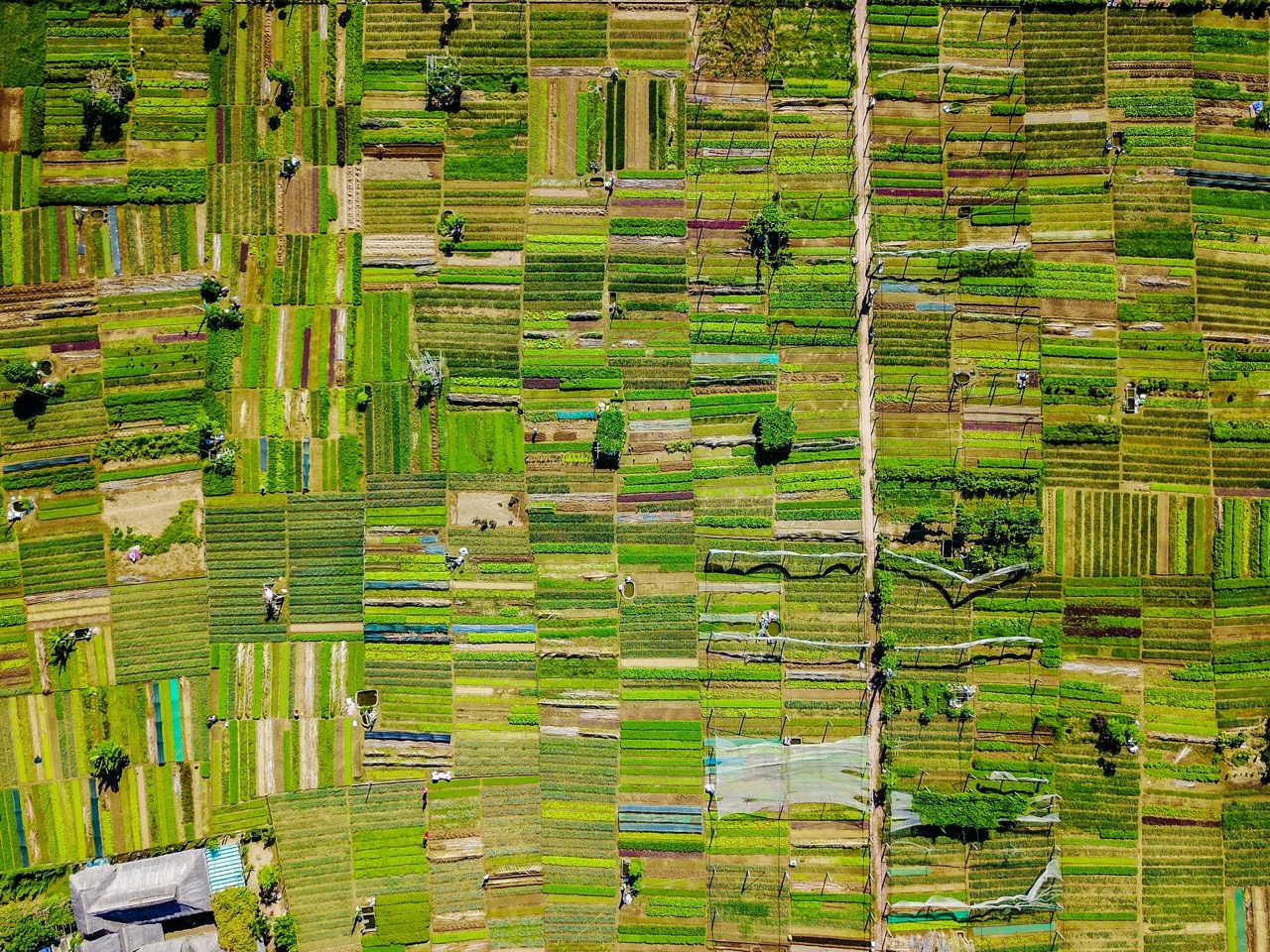Since devastating storms struck Texas last month, its farms have suffered unfathomable losses while food banks have seen dramatic increases in demand. Record-breaking freezing temperatures resulted in an estimated $600 million in losses to Texas farmers and ranchers. Meanwhile, as power outages and boil-water notices spread across the state, millions of people found themselves in need of support from aid-providing organizations.
Our fundraising team launched a campaign to provide aid to Texas which has to date has raised $47,412 (including a ten thousand dollar gift from BEM Systems). On the other side of the Farmlink Project organization, our Core Pillar teams—which facilitate the logistics of connecting surplus from farms to communities in need—quickly set to work. Caroline Spertus, one of the leads of our Deals Team, explained how “we were able to respond almost immediately to an acute need by leveraging our existing relationships and sticking to process.” The Deals Team, Caroline said, didn’t stray from their tried and true methods: they started by reaching out to farms and food banks we’d already worked with and then focused all of The Farmlink Project’s Power Hours (the easiest way for external volunteers to get involved) on locating produce in Texas. Most significantly, Caroline reflected upon “how powerful The Farmlink Project's ability to be reactive can be.”
.jpeg)
The Farmlink Project has facilitated deliveries totaling 338,474 pounds of produce to food banks in Texas since the upheaval caused by the unexpected storms. Our partnership with Chipotle proved fruitful once more as they encouraged their partnered farms to donate produce to this cause. In two weeks, ten deliveries went out to seven cities across the state. One delivery that went to North Texas Food Bank included 39,603 pounds of bottled water—a scarce necessity due to the widespread lack of access to drinkable water. Two more deliveries went out to San Antonio Food Bank, and a smaller load of 6,000 pounds of carrots went out to Brighter Bites, an organization that provides bags of nutritious, fresh food to families of schoolchildren.
As an organization born out of a crisis—the COVID-19 pandemic, we are committed to directing our resources to communities that need it most. When confronted by the constant hardships that plague this country and its food system, we make sure to dedicate our organization to do all that we can to support those who have fallen and use our platforms to amplify their voices and tell the stories that go unheard.
< Back
Since devastating storms struck Texas last month, its farms have suffered unfathomable losses while food banks have seen dramatic increases in demand. Record-breaking freezing temperatures resulted in an estimated $600 million in losses to Texas farmers and ranchers. Meanwhile, as power outages and boil-water notices spread across the state, millions of people found themselves in need of support from aid-providing organizations.
Our fundraising team launched a campaign to provide aid to Texas which has to date has raised $47,412 (including a ten thousand dollar gift from BEM Systems). On the other side of the Farmlink Project organization, our Core Pillar teams—which facilitate the logistics of connecting surplus from farms to communities in need—quickly set to work. Caroline Spertus, one of the leads of our Deals Team, explained how “we were able to respond almost immediately to an acute need by leveraging our existing relationships and sticking to process.” The Deals Team, Caroline said, didn’t stray from their tried and true methods: they started by reaching out to farms and food banks we’d already worked with and then focused all of The Farmlink Project’s Power Hours (the easiest way for external volunteers to get involved) on locating produce in Texas. Most significantly, Caroline reflected upon “how powerful The Farmlink Project's ability to be reactive can be.”
.jpeg)
The Farmlink Project has facilitated deliveries totaling 338,474 pounds of produce to food banks in Texas since the upheaval caused by the unexpected storms. Our partnership with Chipotle proved fruitful once more as they encouraged their partnered farms to donate produce to this cause. In two weeks, ten deliveries went out to seven cities across the state. One delivery that went to North Texas Food Bank included 39,603 pounds of bottled water—a scarce necessity due to the widespread lack of access to drinkable water. Two more deliveries went out to San Antonio Food Bank, and a smaller load of 6,000 pounds of carrots went out to Brighter Bites, an organization that provides bags of nutritious, fresh food to families of schoolchildren.
As an organization born out of a crisis—the COVID-19 pandemic, we are committed to directing our resources to communities that need it most. When confronted by the constant hardships that plague this country and its food system, we make sure to dedicate our organization to do all that we can to support those who have fallen and use our platforms to amplify their voices and tell the stories that go unheard.
The Farmlink Project in Texas
Since devastating storms struck Texas last month, its farms have suffered unfathomable losses while food banks have seen dramatic increases in demand. Record-breaking freezing temperatures resulted in an estimated $600 million in losses to Texas farmers and ranchers. Meanwhile, as power outages and boil-water notices spread across the state, millions of people found themselves in need of support from aid-providing organizations.
Our fundraising team launched a campaign to provide aid to Texas which has to date has raised $47,412 (including a ten thousand dollar gift from BEM Systems). On the other side of the Farmlink Project organization, our Core Pillar teams—which facilitate the logistics of connecting surplus from farms to communities in need—quickly set to work. Caroline Spertus, one of the leads of our Deals Team, explained how “we were able to respond almost immediately to an acute need by leveraging our existing relationships and sticking to process.” The Deals Team, Caroline said, didn’t stray from their tried and true methods: they started by reaching out to farms and food banks we’d already worked with and then focused all of The Farmlink Project’s Power Hours (the easiest way for external volunteers to get involved) on locating produce in Texas. Most significantly, Caroline reflected upon “how powerful The Farmlink Project's ability to be reactive can be.”
.jpeg)
The Farmlink Project has facilitated deliveries totaling 338,474 pounds of produce to food banks in Texas since the upheaval caused by the unexpected storms. Our partnership with Chipotle proved fruitful once more as they encouraged their partnered farms to donate produce to this cause. In two weeks, ten deliveries went out to seven cities across the state. One delivery that went to North Texas Food Bank included 39,603 pounds of bottled water—a scarce necessity due to the widespread lack of access to drinkable water. Two more deliveries went out to San Antonio Food Bank, and a smaller load of 6,000 pounds of carrots went out to Brighter Bites, an organization that provides bags of nutritious, fresh food to families of schoolchildren.
As an organization born out of a crisis—the COVID-19 pandemic, we are committed to directing our resources to communities that need it most. When confronted by the constant hardships that plague this country and its food system, we make sure to dedicate our organization to do all that we can to support those who have fallen and use our platforms to amplify their voices and tell the stories that go unheard.
.png)
.jpeg)







.svg)
.svg)
.svg)